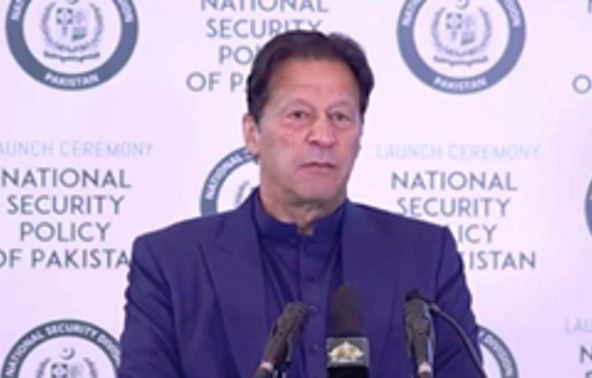Pakistan after 75-years of its existence has released its first ever National Security Policy (NSP), which it claims will ensure human security for the ordinary Pakistani masses.
A critical review of the recently released National Security Policy (NSP) of Pakistan by its National Security Advisor, Yusuf Moeed, reveals that it’s a document which contradicts itself through its various promises and their delivery mechanism. Further it also reveals that how the military-political combine in Pakistan has controlled so far and plans in the future too, how to control the distribution of resources in the country, consolidate its power over every aspect of the governance, every state organ and the civil society.
The unclassified part of the NSP spread over a 62-page document loftily talks about the parameters of the national security framework, enunciates its implementation strategy, outlines policy guidelines for bolstering national unity and securing the country’s economic future, besides ensuring its defence, territorial integrity, and internal security, guiding principles for foreign policy in the changing world and linking all this to the human security.
The NSP peppered with ostensibly altruistic claims, looks like a bunch of hollow words with no apparent practical roadmap for the future. The policy claims to have been a result of consensus with ‘all stakeholders’, but strangely enough, no defence or security expert, economist, social scientist and most all any parliamentarian has not been consulted on the issues handled by the NSP.
NSP has finally been formulated for the first time in 75 years, since the existence of Pakistan but without taking parliament into confidence. The policy formulators in a bid to undermine parliament’s role stated that policy formulation, especially the one pertaining to national security, is a prerogative of the executive branch in the entire democratic world.
Thought that might be the case. But in a parliamentary democracy there is a unwritten understanding that the executive branch will always be answerable to the parliament and that no policy, no law could be made without addressing the concerns of the various stakeholders in the government and above all the people’s will.
It is ensured by not only allowing the parliament to debate and discuss every aspect of the government’s decisions but also by including the gist of those discussions.
Further, one wonders how a new strategy could be formulated without delving into the past’s mistakes or misadventures, as has happened with Pakistan and its neighbours.
Perhaps for the first time in Pakistan’s history, a civil government has admitted that without ensuring economic security, “traditional security”, i.e. defence, is not possible. Though in reality the country’s impoverished economy has collapsed under the burden of the traditional military-security combine. The document seems to have provided only disjointed and abstract thoughts and views and fails to provide a clear connection between traditional security and human security and ways to implement it.
ALSO READ: Pak Army Can’t Be Confined To Barracks
Though human security is mentioned in the title of the document, yet it is mentioned only casually and superficially, and that too in the last chapter of the document.
NSP’s emphasis is undoubtedly on defence. And here too it reflects Pakistan’s obsession with its traditional rival and bemoans the imbalance between the two in the sphere of conventional weapons.
If the Pakistan government really wants to be seen as the one, which is committed to rebuilding the fragile economy of the country, then different contradictions and demands have to be set right first. Then all aspects of traditional security must be subjected to economic imperatives, which could warrant fruitful results for the economy and could flow directly to the masses.
In the current background of ‘global village’ Pakistan should try for peaceful settlement of its disputes with all neighbours, in concurrence with mutually beneficial trade and investment policies, and building economic synergies to strengthen economic interdependence.
The NSP ignores the fact that all aspects of traditional security are linked to economic imperatives. This further requires resolution of ‘core issues’ through negotiations – not a reiteration of the earlier strategy, which has not worked.
For ensuring economic security, every country requires to strengthen regional cooperation and economic partnerships, rather than regional conflicts. But, the NSP lists several geostrategic compulsions – which may not help it to consolidate economic potential at a regional scale.
To deliver human security for the country’s masses and ensure a sustainable and participatory development model Pakistan needs to rework the whole paradigm of its governance, only then it could talks about the priorities of human security to raise the quality of life of its masses.
Further, the Imran Khan government, if it has to deliver for the masses then first it will have to demolish the old military combine of the country, which has prospered at the cost of the masses, filling the pockets of its generals and political leaders in the name of pursuing a defensive policy against its neighbour. This goal seems insurmountable given the manner in which the Pakistan’s political and military have supplemented and complemented each other over the years and they are in a position to destroy every move against them, in the future too.
(Asad Mirza is a political commentator based in New Delhi. He writes on issues related to Muslims, education, geopolitics and interfaith)


